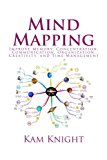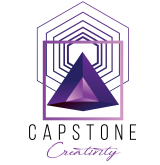Content Mapping for Success
In Part 1 of this series, we explored two major challenges in delivering effective training and learning-based marketing content:
Challenge #1: Time-Linear Delivery
Challenge #2: Detail-Oriented Delivery
Don’t forget: each of these challenges in delivering stems from a challenge in consuming the information.
Part 2: Reaching All Instead of Some (WHY)
Let’s now look at two more.
With the advent of relatively inexpensive ways of creating & distributing audio recordings and videos, lots and lots of trainers, teachers, gurus, and thought leaders have aggressively moved to these new media, and away from print. This has had enormous positive impact on both the consumers and the creators’ pocketbooks.
One reason is that sound (and sometimes video, too) is so much better at communicating emotion, and emotion is a highly necessary (and often ignored) ingredient in rapid learning and in quick purchasing decisions. Establishing an emotional bond between the teacher or the marketer and the learner or consumer leads to a much better quality learning and–in the case of learning-based marketing–a higher likelihood of action.
Another reason is that audio can be consumed while doing something else, thus it is an excellent medium for busy people. We, of course, knew that already from many decades of experience with radio: You can learn while driving, walking, exercising, cooking or doing many other activities. I often listen to short business classes while doing mindless activities, such as cleaning up my desk or shredding useless papers.
So now we get almost everything in audio and video.
Here is our third challenge:
Challenge #3: Auditory-Dominant Delivery
Depending on which study you rely on, anywhere from 30% to almost 55% of all people are visually dominant. Some more so than others. No matter how convenient or compelling audio (or even most video) content is, visually-dominant people NEED to look at something in order to consume it. They need either text (if they are strongly left-brained) or pictures (if they are strongly right-brained) or both (for most of them).
So what does a visually-dominant learner do when faced with content coming solely in, say, audio form? Well, it depends on their level of motivation. If the motivation is low, they are likely to retain little and move on to the next thing. If there is some motivation, they may partially consume it, but the results may not be what you would want. If the motivation is high, they may spend a lot of time taking notes or drawing notes.
In all cases, if the communication medium does not match one’s learning dominance, there is a certain amount of pain inflicted. Depending on the level of motivation or emotional bond, some people may put up with it, but most will not.
Dividing learners into visually-dominant, auditorily-dominant, and kinestetically-dominant is an important matter to keep in mind any time we communicate, but not the only useful classification.
Challenge #4: Wh-Unbalanced Delivery
A while ago, David Kolb created a model that classifies modes of learning, and by implication learners themselves, into four categories. A highly simplified way of describing his model is to refer to learners (people) as the Why-, the What-, the How- and the WhatIf- people.
The Why-people need to be given or to easily construct “the big picture.” They need to understand why is it that they should pay attention to you.
The What-people need to be given or to easily construct “the organization, the components” of the topic. They need to understand what is in there in order to pay attention to you.
The How-people need to be given or to easily construct “the process, the steps.” They need to understand how would this work in practice in order to pay attention to you.
The What If-people need to be given or to easily construct “the immediate actions, the what-to-do-now.” They need to understand what would take if they started immediately in order to pay attention to you.
Our challenge as communicators or teachers is in accommodating ALL these four categories. Most often we communicate in a way that reflects our own mode of operation. For example, why-people would teach in a way that’s easy for other why-people, but very hard for what-if-people. How-people would communicate in ways that are easy for other how-people, but hard for why-people. And so on.
Our communications are unbalanced across these four categories.
So what?
Well, unless we pre-select our audience based on these four groups, or we absolutely know what group our prospects are, we end up losing the ones outside that group. That actually may mean we end up losing a lot of our best students or prospects, which means our communications become highly … ineffective.
This is often compounded by the fact that we often get great feedback and testimonials from those in the group we inadvertently favor, leaving us with the illusion that we’re doing a great job. Which we are … for this group of people alone. Since, in our culture, it takes much more motivation for someone to make the effort of giving negative feedback, both we and our prospects lose.
To recap, I outlined four major challenges we all face in creating and delivering our training and marketing communications:
Challenge #1: Time-Linear Delivery
Challenge #2: Detail-Oriented Delivery
Challenge #3: Auditory-Dominant Delivery
Challenge #4: Wh-Unbalanced Delivery
In the next episode, I will reveal why visual representations, such as mindmaps, are a good tool to overcome these (and other) challenges.
See you then…
References:
Case Study: Thought Leader Secrets Mini-Course (Lesson 1) with Jay Abraham & Mark Harris.
You can listen to the audio version of this article and comment on it at http://www.SergiuSimmel.com
Sergiu Simmel maps the audio, video or text of quality training & marketing content through well-structured, well-balanced mind maps for easier, faster, more profitable learning. Follow on Twitter – SergiuSimmel
Product Description
This is a comprehensive guide to learning about a wonderful technique called mind maps.
Mind maps are an amazing organizational and creativity tool that can improve memory, concentration, communication, organization, creativity, and time management.
This book is the ultimate resource on the topic of mind maps. In a short time, it can enhance your skills in reading, writing, learning, note taking, brainstorming, planning, productivity, and so much more.
Price: $10.99



